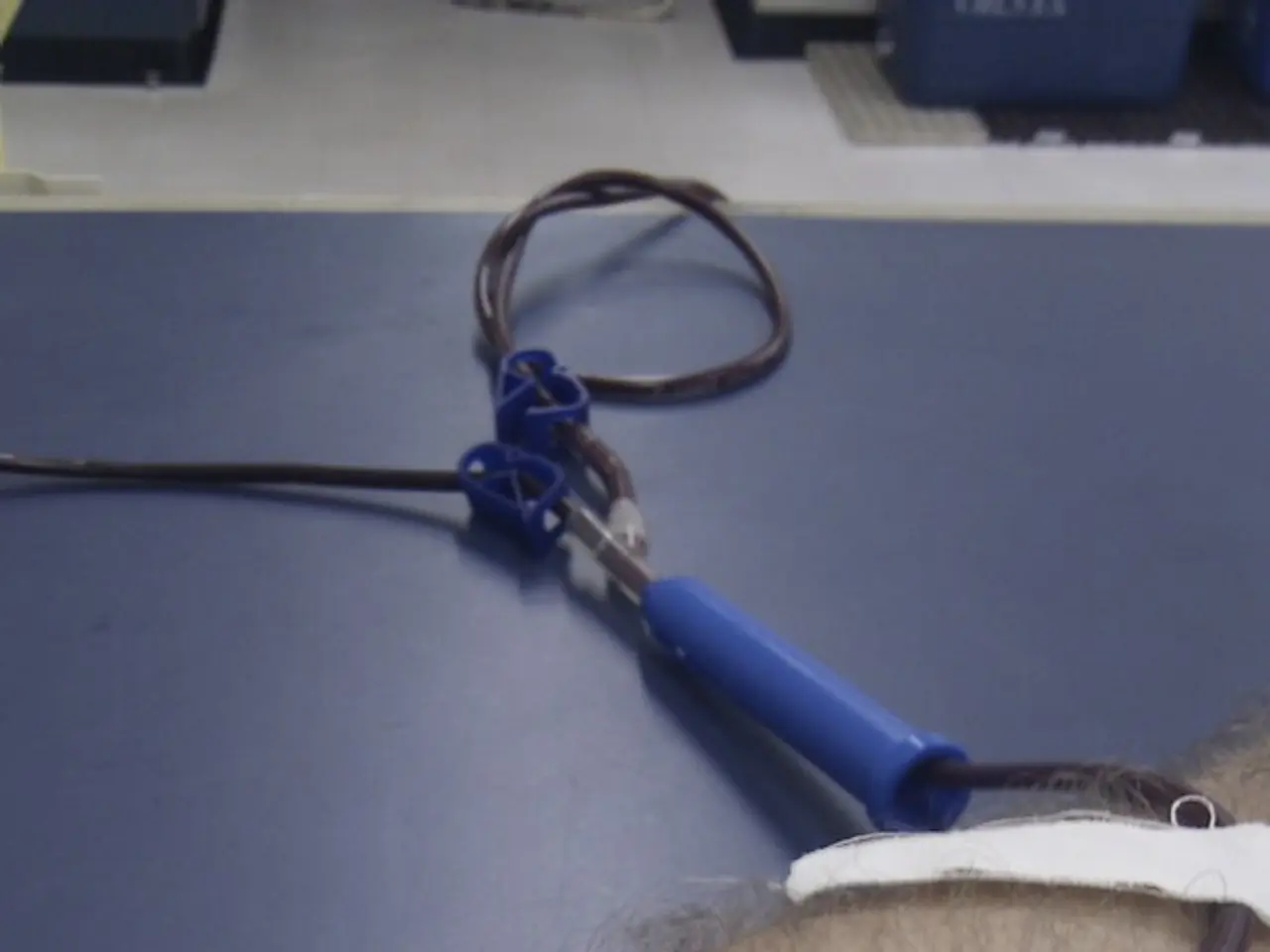Tuberculous meningitis: An infection that inflames the membranes surrounding the brain and spinal cord, caused by tuberculosis bacteria.
Tuberculous meningitis (TBM), a severe form of meningitis, is caused by Mycobacterium tuberculosis bacteria primarily affecting the membranes surrounding the brain and spinal cord. This article aims to provide a clear understanding of TBM, its symptoms, causes, and preventive measures.
TBM is more common in individuals with weakened immune systems, such as those living with HIV/AIDS, malnutrition, or other chronic illnesses. The primary cause of TBM is the spread of Mycobacterium tuberculosis from an active TB infection elsewhere in the body.
Common symptoms of TBM include headache, fever, nausea and vomiting, stiff neck, altered mental status, and seizures. As the disease progresses, patients may experience loss of consciousness, coma, and neurological deficits such as weakness or sensory loss.
While TBM itself is not contagious, the bacteria that cause it can be spread through the air when an infected person coughs or sneezes. This is why early detection and treatment of tuberculosis are crucial to prevent the progression to TBM.
Diagnosis of TBM typically involves a combination of clinical evaluation, imaging studies (such as MRI), and analysis of cerebrospinal fluid (CSF). Treatment usually involves a prolonged course of antitubercular medications, often combined with corticosteroids to reduce inflammation. The treatment regimen can last from 9 to 12 months, depending on the severity of the disease and the patient's response.
Raising awareness about tuberculosis and its complications, such as TBM, can help reduce the incidence of the disease. Public health education plays a significant role in this regard. Improving living conditions, including housing, nutrition, and access to healthcare, can also significantly reduce the incidence of TB and, consequently, TBM.
Regular screening for TB in high-risk populations can help catch the disease early. Ensuring that patients complete their TB treatment regimen is vital to prevent the spread of the bacteria and the development of TBM.
The BCG vaccine, primarily used to protect against tuberculosis, can reduce the risk of severe forms of TB in children, including TBM. Access to clean water can improve overall health and reduce the risk of infections, including TB.
Patients may experience long-term neurological issues, including cognitive impairment, motor dysfunction, and seizures, even after successful treatment.
TBM is more prevalent in countries highly endemic for tuberculosis, such as Mozambique, South Africa, the Philippines, postsoviet states in Europe, and countries with high multidrug-resistant TB burdens like Ethiopia, Armenia, Bangladesh, China, Congo, India, Indonesia, Nigeria, Pakistan, Russia, and Vietnam.
In conclusion, understanding TBM, its causes, symptoms, and preventive measures is essential to combat this severe form of meningitis. Early detection, proper treatment, public health education, and improved living conditions can significantly reduce the incidence of TBM and improve the quality of life for those affected by tuberculosis.
Read also:
- Overweight women undergoing IVF have a 47% higher chance of conceiving naturally post-weight loss
- Bonsai Trees from Evergreen Species: Exploring Growth Characteristics & Distinct Qualities
- What temperatures may make walking your canine companion uncomfortable?
- Title: Information About Beovu: Potency, Form, Usage, and Additional Details





